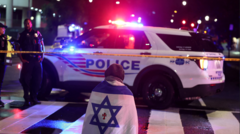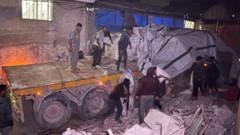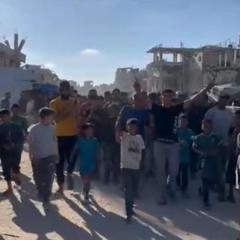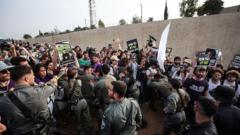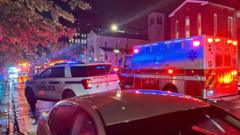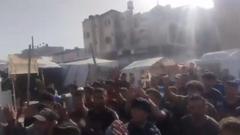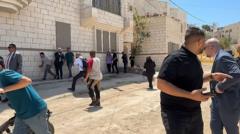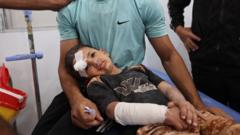The shooting incident reflects a worrisome trend in hate crimes, especially against Jewish communities, following the October 2023 Hamas attacks.
**Fatal Shooting Outside Jewish Museum Highlights Spike in Antisemitism**

**Fatal Shooting Outside Jewish Museum Highlights Spike in Antisemitism**
A couple of Israeli diplomats were killed near the Capital Jewish Museum, raising alarms amid a global rise in antisemitic incidents.
The shooting of two Israeli Embassy employees outside the Capital Jewish Museum in Washington has become a stark illustration of the growing antisemitism that has escalated since the Hamas attacks on October 7, 2023. This incident underlines a dramatic increase in violence and hostility towards Jewish individuals and institutions globally, with reports indicating that such offenses have doubled, tripled, or even more since the onset of conflict.
The attacks by Hamas, which resulted in the death of over 1,200 people and the abduction of 250 hostages in October last year, set off a pattern of antisemitic behavior that has continued unabated during Israel's ongoing military operations in Gaza. Reports suggest that over 50,000 Palestinians have died as a result of the bombing campaigns and blockades enforced by Israel, contributing to the heightened rhetoric and actions against Jewish communities worldwide.
Organizations dedicated to tracking hate crimes have found a significant spike in incidents characterized by verbal abuse, social media harassment, vandalism with Nazi symbols, and, alarmingly, violent confrontations that have resulted in injuries and fatalities. Professor Uriya Shavit, who heads the Religious Studies Program at Tel Aviv University and oversees a key annual report on antisemitism, commented on the widespread nature of these incidents. He emphasized the challenge of defining antisemitic actions amidst heightened global political tensions, especially around the humanitarian impacts of the Israel-Gaza conflict.
Despite heavy sentiments surrounding these issues, the violent incident at the Jewish Museum stands out as a severe deviation from the many reported cases of antisemitism, which typically manifest in less extreme ways. The shooting occurred during an event hosted by the American Jewish Committee aimed at young diplomats, highlighting a distressing intersection of hate and the political landscape that surrounds sensitive topics such as these. As the world grapples with these incidents, understanding and addressing the roots of such violence becomes imperative for society at large.
The attacks by Hamas, which resulted in the death of over 1,200 people and the abduction of 250 hostages in October last year, set off a pattern of antisemitic behavior that has continued unabated during Israel's ongoing military operations in Gaza. Reports suggest that over 50,000 Palestinians have died as a result of the bombing campaigns and blockades enforced by Israel, contributing to the heightened rhetoric and actions against Jewish communities worldwide.
Organizations dedicated to tracking hate crimes have found a significant spike in incidents characterized by verbal abuse, social media harassment, vandalism with Nazi symbols, and, alarmingly, violent confrontations that have resulted in injuries and fatalities. Professor Uriya Shavit, who heads the Religious Studies Program at Tel Aviv University and oversees a key annual report on antisemitism, commented on the widespread nature of these incidents. He emphasized the challenge of defining antisemitic actions amidst heightened global political tensions, especially around the humanitarian impacts of the Israel-Gaza conflict.
Despite heavy sentiments surrounding these issues, the violent incident at the Jewish Museum stands out as a severe deviation from the many reported cases of antisemitism, which typically manifest in less extreme ways. The shooting occurred during an event hosted by the American Jewish Committee aimed at young diplomats, highlighting a distressing intersection of hate and the political landscape that surrounds sensitive topics such as these. As the world grapples with these incidents, understanding and addressing the roots of such violence becomes imperative for society at large.





